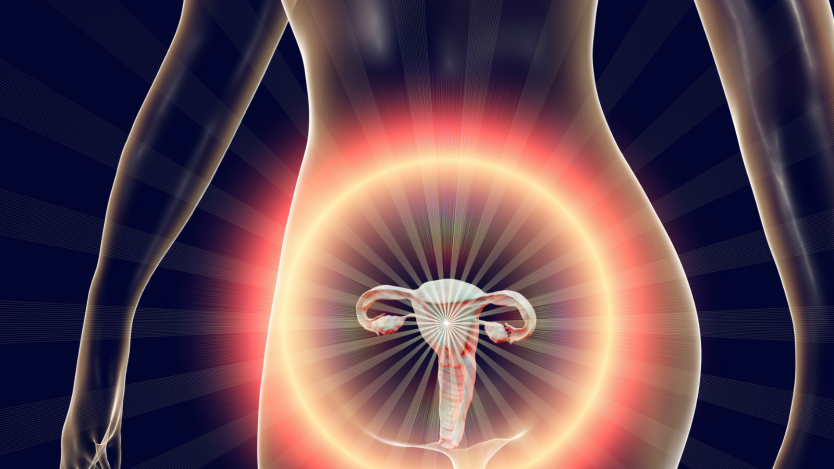The longest surgery in history

- What is the longest surgical intervention in history?
- The longest intervention in history: step by step
- What is an ovarian cyst?
- Why do cysts form? Types of cysts
- What are polycystic ovaries?
What is the longest surgical intervention in history?
- The longest known surgery in history took place in 1951 in the USA, more specifically in Chicago.
- It involved surgery to remove an ovarian cyst that had been growing non-stop for around 10 years.
- There are several types of ovarian cysts, we explain what types there are in this article.
The longest surgery in history known to date was performed in 1951 at the Chicago hospital.
It lasted four days, no more and no less than 96 hours of surgery in which the health professionals involved had to stay awake and alert to ensure that everything went well.

Free Assessment for Contracting Medical Services
Operarme’s Patient Service will contact you and solve all your questions on the medical service you need.
The surgical intervention consisted of removing an ovarian cyst weighing more than 130 kilos. The owner of this tumour was 58-year-old Gertrude Levandowski, who lived in Burnips, Michigan.
When the patient was admitted to the hospital, she weighed almost 280 kilos, when she left she weighed 140 kilos.
Gertrude Levandowski was widowed in the 1940s and as a result began to put on weight, she did not know she had an ovarian cyst.

When caught early, an ovarian cyst is usually harmless, as it can be treated with medication, go away on its own or be removed. But that was not the case for Gertrude Levandowski, who spent nearly a decade with the cyst on her ovary and didn't know it.
Over the years, the cyst grew alarmingly large and she developed heart problems.
The longest intervention in history: step by step
Once the patient's cyst was detected, it was determined that it needed to be removed, but the patient's heart problems made it extremely risky to perform surgery on such a large cyst, as the pressure would drop dramatically and Gertrude would die.
It was then that Dr MS Roberts proposed an alternative to removing the tumour. He proposed to gradually drain the fluid from the cyst and when the cyst was smaller in size, to remove it, as it would not be life-threatening to the patient.
Dr. MS Roberts' alternative offered a viable solution, so on 4 February 1951, the cyst was drained and drained gradually over 4 days, until 8 February.
The process was very slow, as it was necessary to ensure that the pressure did not drop rapidly, as this would cause very dangerous cardiac problems for the patient, so the drainage rate was 120 drops per minute. After 4 days, more than 90 kilos of fluid had been removed from inside the cyst.

Once the cyst had been drained, its size was much smaller and therefore much more manageable. At this point, removing the tumour no longer posed a great risk to the patient's heart, so it was removed in the conventional way, thus eliminating the 40 kilos of cyst that still remained in Gertrude Levandowski's body.
It had been a major operation; it should be noted that, as a rule, the longer an operation lasts, the greater the chance of complications, but this was not the case for Gertrude Levandowski, as she recovered quickly from the operation and was able to return home within a few days.
Four months after the intense operation, the patient underwent another operation to get rid of more than 20 kilos of excess skin.
What is an ovarian cyst?
The ovaries are the female organs, approximately 2 to 3 cm in diameter, which are primarily responsible for controlling the production of the female hormones oestrogen and progesterone. These hormones are primarily responsible for regulating the menstrual cycle.
Cysts are fluid-filled sacs, which are surrounded by a very thin wall. They can be located on or inside the ovary and can appear on one or both ovaries.

Ovarian cysts can develop in women of any age, although they tend to occur in the reproductive years, and after the menopause the incidence decreases.
Why do cysts form? Types of cysts
There are different types of cysts and each type of cyst has a different original formation process:
Functional cyst
A functional cyst is a cyst that forms from a failure of ovulation. There are two types of functional cysts: follicular cysts and corpus luteum cysts.
- Follicular cyst: in the female anatomy, during the menstrual cycle, a follicle grows once a month in the ovary. From this follicle the egg develops and is released once a month. This is known as the ovulation process. If the follicle fails to open to let the egg out, the fluid stays inside the follicle and a cyst is produced, which is when a follicular cyst occurs.
- Corpus luteum cyst: this other type of cyst occurs when the egg has already been released from the follicle, but the follicle is sealed when the egg is released. This type of cyst usually contains some blood.

Dermoid cyst
Dermoid cyst is a type of cyst that can be present at birth and grow over the years, although they are usually small and do not cause symptoms. They are formed from a type of cell that has the ability to form in different types of tissue.
Cystadenomas
Cystadenomas are cysts that arise from cells located on the outside of the ovary. They are sometimes fluid-filled, but are usually benign.
Endometriomas
In this case, the tissue that lines the uterus (endometrium) develops in areas outside the uterus, such as on the ovaries. Endometriomas are found to be filled with blood.
What are polycystic ovaries?
Polycystic ovaries are ovaries that have many small cysts, up to 8mm, located around them. These cysts are harmless, but should be checked annually.
It is a common condition in women of childbearing age and it is common for the follicles to be unable to release eggs, so ovulation sometimes does not occur.
Polycystic ovaries may or may not be accompanied by symptoms, while Polycystic Ovarian Syndrome (PCOS) is a hormonal imbalance that can cause irregular menstrual periods, acne, hair growth, among others.

Free Assessment for Contracting Medical Services
Operarme’s Patient Service will contact you and solve all your questions on the medical service you need.
Medical disclaimer: All the published content in Operarme is intended to disseminate reliable medical information to the general public, and is reviewed by healthcare professionals. In any case should this information be used to perform a diagnosis, indicate a treatment, or replace the medical assessment of a professional in a face to face consultation. Find more information in the links below:
